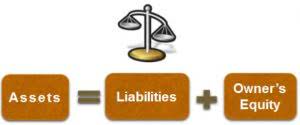
Because a 25% return on assets is exceptionally high, the inference is that part of the company’s profitability was due to the existence of substantial goodwill assets. Consider the case of a hypothetical investor who purchases a small consumer goods company that is very popular in their local town. Although the company only had net assets of $1 million, the investor agreed to pay $1.2 million for the company, resulting in $200,000 of goodwill being reflected in the balance sheet. In explaining this decision, the investor could point to the strong brand and consumer following of the company as a key justification for the goodwill that they paid. If, however, the value of that brand were to decline, then they may need to write off some or all of that goodwill in the future. The value of a company’s name, brand reputation, loyal customer base, solid customer service, good employee relations, and proprietary technology represent aspects of goodwill.

Plaintiff Evan R. Dawson was a partner at the Manhattan law firm of
White & Case for nearly 20 years. Sometime before 1988, the firm commenced
negotiations with Dawson to persuade him to withdraw as a partner. When
the talks reached an impasse, White & Case voted to dissolve the partnership
and re-form without Dawson, effective July 1, 1988. Personal goodwill is the value of earnings or cash flow directly attributable to the individual’s characteristics or attributes. Investors can analyze a company’s financial statements, focusing on the Goodwill amount and its potential impact on the overall business valuation.
Can you solve 4 words at once?
However, this goodwill is unrelated to a business combination and cannot be recorded or reported on the company’s balance sheet. The concept of goodwill comes into play when a company looking to acquire another company is willing to pay a price premium over the fair market value of the company’s net assets. If the fair value of Company ABC’s assets minus liabilities is $12 billion, and a company purchases Company ABC for $15 billion, the premium paid for the acquisition is $3 billion ($15 billion – $12 billion). A. The first issue is whether White & Case possessed goodwill that
was capable of distribution upon dissolution. Dawson commenced this action against the partnership in dissolution
and successor firm, alleging he was wrongfully terminated. In an amended
complaint, Dawson asserted causes of action for an accounting, interference
with prospective economic advantage, breach of fiduciary duty, conversion,
trespass, invasion of privacy, and breach of contract.

Accounting goodwill is sometimes defined as an intangible asset that is created when a company purchases another company for a price higher than the fair market value of the target company’s net assets. But referring to the intangible asset as being “created” is misleading – an accounting journal entry is created, but the intangible asset already exists. The entry of “goodwill” in a company’s financial statements – it appears define goodwill in the listing of assets on a company’s balance sheet – is not really the creation of an asset but merely the recognition of its existence. Goodwill is a long-term (or noncurrent) asset categorized as an intangible asset. The amount of goodwill is the cost to purchase the business minus the fair market value of the tangible assets, the intangible assets that can be identified, and the liabilities obtained in the purchase.
Examples of goodwill in a Sentence
There are two utilities assessed in this step – the “importance utility” and the “existence utility.” The importance utility is a relative measurement of each attribute’s importance to the valuator. Each attribute has some measure of importance, since it has been selected as an attribute, therefore, the attribute must have a weight greater than zero. Google’s brand, synonymous with internet search and innovation, is a key factor in the company’s goodwill. With all of the above figures calculated, the last step is to take the Excess Purchase Price and deduct the Fair Value Adjustments. The resulting figure is the Goodwill that will go on the acquirer’s balance sheet when the deal closes. For example, the drinks company Coca-Cola – which has been around since 1886, makes a popular product based on a secret formula, and is generally perceived positively by the general public – has a lot of goodwill.
Deixe um comentário